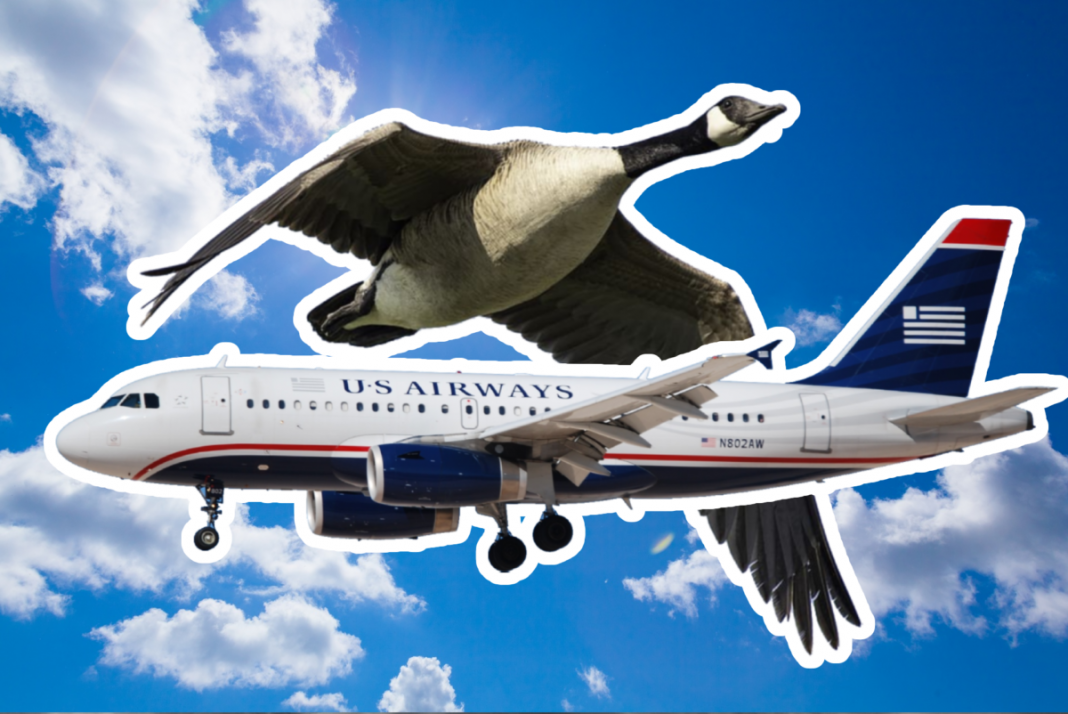In a head-on contest of birds vs. planes, who wins? Surprisingly, despite one made of feathers and the other metal, there are some severe consequences of a mid-air collision for planes. Are bird strikes dangerous? Let’s explore.

How frequent are bike strikes?
A bird strike in aviation is defined as the event when an avian animal hits an aircraft during take-off or landing. Bird strikes are entirely possible at cruising speed; however, birds rarely fly so high and thus, it is practically impossible (the highest recording flight of a bird was at 11,300 meters (37,100 feet)).
Bird strikes can also be called bird ingestion (when the bird or bat goes in the engine), bird hit, or bird aircraft strike hazard (BASH).
According to research published by the FAA in 2016, there are roughly 13,000 bird strikes on aircraft per year in the US. However, over 65% of these strikes do little or no damage to the plane (alas, the poor animal dies nearly every time), with the remaining percentage doing various degrees of damage.
There has been an increase in bird strikes since records began, not because of overzealous pilots trying to play chicken, but rather because of the rise in air travel and the development of quieter aircraft. In the past, an aircraft moved slow enough and was so loud (thanks to propellers) than birds heard it miles away sneaking up.

Are they dangerous?
Unfortunately, there are cases of a bird strike causing the plane to enter an inescapable dive and killing the crew onboard. But the odds of this happening are incredibly low: One accident resulting in human death in one billion (109) flying hours.
A famous example of a bird strike was US Airways Flight 1549, otherwise known as the Hudson river miracle. The aircraft hit birds in flight and caused both engines to fail. The aircraft, without enough altitude, had to perform a water landing as it was unable to reach an airport in time. Fortunately, no one was hurt. However, there are other examples in which bird strikes have shattered a windscreen or caused an aircraft to crash.

How can we prevent bird strikes?
Naturally, it falls on the aviation industry to prevent bird strikes through the following ways:
- Design aircraft to receive sustained bird strikes, up to 1.8kg bird hitting each component (such as the windscreen) at speed. Engines need to be able to ingest a bird up to 1.8kg (tested using gelatin blocks mimicking the density of birds) and safely shutdown (thus not have an uncontained engine failure).
- Removal of habitat near airports. By moving or replacing food sources (such as using a different grass than birds like near runways), there will be less chance of a bird being nearby aircraft. Airports must also manage water runoff and ensure that once off the runway, water doesn’t pool and form a wetland that provides a home for birds.
- Repelling birds through chemical, noise, physical or visual devices. Everything from fake (or real) hawks on hangers, to loud pyrotechnics going off, to even using lasers.
Through these methods, it is possible to reduce bird strikes, and flying is as safe as possible – for both passengers and our feathered friends.
What do you think? Let us know in the comments.
[ad_2]
Source link


